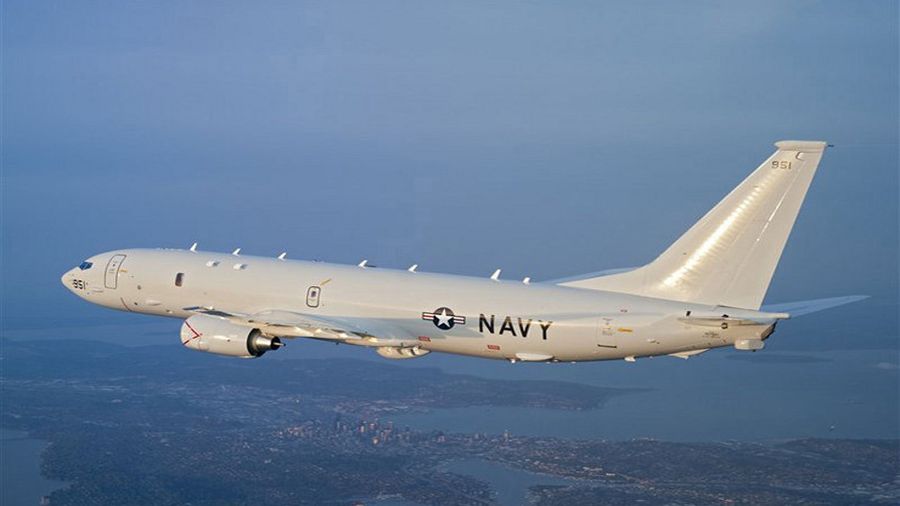US Encircles China through Provocations
The US has recently carried out a deliberate effort to exert military and political pressure on Beijing, and organize provocations against the PRC from all sides along its national borders, as it is fearful of losing in its standoff with China and being stripped of its leading position in the world.
To this end, the US authorities will expand their military and technical cooperation with the countries of Asia-Pacific (APAC) by continuing to invest considerably in its military presence in the region, building more and more new military alliances and organizing numerous military exercises around China, making no secret of their outright anti-China orientation. As even the US media point out, the AUKUS agreement between the three states – the US, the UK and Australia – despite the fact that it does not officially mention China, has blatantly anti-Chinese aims, and it will dramatically facilitate the exchange of intelligence information, breakthrough military technology and developments in the field of artificial intelligence. Separate articles of the agreement are dedicated to long-range rapid-strike technologies, reaffirming the commitment to pool their underwater surveillance systems in order to better counter China’s rise in Asia-Pacific. Notably, with the emergence of AUKUS, there have been increasing numbers of headlines in the media, almost heralding war in the South China Sea.
At the initiative of Washington, the South China Sea, where China’s main trade route runs, has become a hotbed of tension of potential military confrontation between the US and the PRC. The territorial issues in the region of the South China Sea have been going on for decades, with Brunei, China, Malaysia, the Philippines, Taiwan and Vietnam being the main actors fighting over clusters of tiny islands, reefs and rocks: the Spratly Islands in the south and the Paracel Islands in the north, which cover only five square kilometers combined. However, it is all about the so-called “exclusive economic zone.” According to the UN Convention on the Law of the Sea, it is a maritime zone of 200 nautical miles wide around a piece of land belonging to a country. Within this area, a state that owns it can engage in resource extraction and other economic activities. And there are unconfirmed projections of around 50 trillion cubic meters of natural gas and over 5 billion barrels of oil in the Spratly Islands region alone – the Reed Bank archipelago.
Washington has long been trying to bring the South China Sea under its control using the slogan “Freedom of navigation.” The US is increasingly dispatching its warships into disputed waters and conducting exercises there with its allies, while China is responding with its own maneuvers and turning underwater reefs into artificial islands with military bases. The two countries’ dangerous maneuvers have already led to a tragedy once before, when a US reconnaissance aircraft and a Chinese fighter jet chasing it collided in the skies over the South China Sea in 2001. Such incidents could recur as relations between the two countries deteriorate and they could lead to an armed conflict between the two nuclear powers, with all the unwanted consequences for the world.
The second hotbed of tension is being recently created by Washington in the region of Taiwan island. In order to contain China, Biden is blatantly violating the One China principle, which the Americans once accepted as one of the main conditions for normalizing US-China relations. US Navy ships have become more frequent violators of Chinese territorial waters in the Taiwan Strait. The situation around Taiwan especially escalated after the provocative visit of Nancy Pelosi, the US House of Representatives Speaker, who arrived on the island on 2 August, despite China’s urging to refrain from doing so. However, less than two weeks after Pelosi’s visit, another US congressional delegation arrived in Taiwan, blatantly provoking Taiwan into declaring independence from mainland China. Many observers and experts are nevertheless confident that the incident will not end there, with the third US congressional delegation expected to visit the island before the end of August. We can therefore agree with the conclusion of Lyle Goldstein, a China expert at the Washington-based research organization Asia engagement at Defense Priorities, who stressed in an interview with the New York Times that these trips “could contribute to escalation.” He also noted that “China and the US are on a dangerous track, which leads to military confrontation.”
Lately, Washington has been equally active making clear anti-China moves via Central Asia on China’s northwestern frontiers. The US Central Command’s “Regional Cooperation 22” command post exercise in Tajikistan from 10 to 20 August this year was a vivid illustration of this. The armed forces representatives of Kazakhstan, Kyrgyz Republic, Mongolia, Pakistan, Tajikistan and Uzbekistan are taking part in it alongside the US servicemen. During this period, the Pentagon and the Tajik Armed Forces are also scheduled to conduct joint bilateral field maneuvers at the Fakhrabad training center in Tajikistan. In addition, at various levels, the military of Kazakhstan and other countries in the region have begun to take part in Steppe Eagle, Jardem and Balance-Kayak joint maneuvers together with units from the United States, the United Kingdom, Turkey and other NATO countries. At the same time, the United States, within the framework of the signed agreements on military cooperation with the republics of Central Asia, envisages not only maneuvers but also the presence of permanent Pentagon “training centers” – veiled bases and tools for the gradual process of taking control over Central Asian armed forces by the North Atlantic Alliance, whose anti-Russia and anti-China orientation has already been officially proclaimed more than once. It goes without saying that America’s development of such military cooperation with Central Asian states is taking place under the guise of joining forces, ostensibly to combat terrorism and drug-trafficking together, to prepare for participation in peacekeeping missions and to secure borders. It is quite clear however that in reality this is all being done in order to practise interoperability within a single command on the part of the US. At the same time, the Central Asian leadership is being probed about their possible disengagement from the bloc with Russia and China, all the more so as Washington has worked on this issue before.
By such actions, Washington deliberately seeks to unbalance Beijing and to aggravate relations with it in order to provoke a harsh reaction from China and to make it “use force” in response to deliberate provocations, that blatantly violate the United States’ publicly declared One China principle. The second key objective is to form an anti-China front in Central and Southeast Asia, using, among other things, Beijing’s so far restrained diplomatic stance in response to US insinuations.







